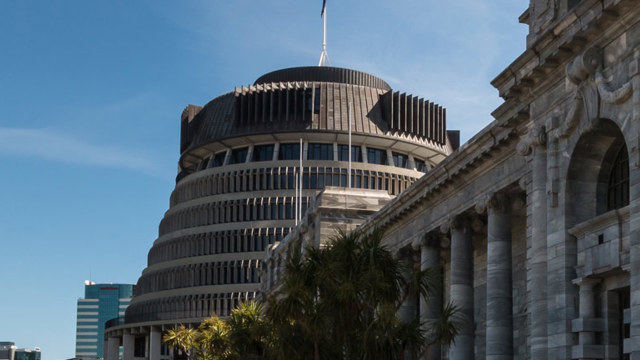Te Ture mō Te Reo Māori 2016
Ko te ao Māori, ōnā reo, me ōnā tikanga he taonga tuku iho. The Māori world, its language and its principles are treasures passed down through the generations.
Earlier this month, the Broadcasting Standards Authority announced that it was ruling a line under complaints about broadcasting in te reo Māori (the Māori language) – citing the fact that te reo Māori is an official language of New Zealand. 2021 has also started with a flurry of publicity around organisations standing up to complaints about the use of te reo Māori by the private and public sector.
Given some of the ensuing public debate, in this article we provide a refresher on the law relating to the status of te reo Māori and the mechanisms in Te Ture mō Te Reo Māori 2016 (Māori Language Act 2016) to revitalise te reo Māori. The Crown has recognised that, not only, is te reo Māori an official language, but that it is a taonga (treasure) belonging to iwi and Māori, and of value for the people of New Zealand as a whole. The Government and Te Mātāwai (a Māori-led independent statutory body) have developed strategies to drive revitalisation towards "audacious" outcomes by 2040.
Te Ture mō Te Reo Māori 2016 (Māori Language Act 2016)
Te reo Māori has been an official language of New Zealand since the Māori Language Act 1987. Te Ture mō Te Reo Māori 2016 (the Act) then affirmed the status of te reo Māori as the indigenous language of New Zealand, a taonga of Māori and a valued and official language of New Zealand. The key developments in the Act were:
-
that the Crown expressly acknowledged that its past policies and practices, over generations, were detrimental and that it had actively failed to protect and promote te reo Māori and its use by Māori;
-
it directs the Crown to take responsibility for the revitalisation of te reo Māori;
-
it provides mechanisms aimed to ensure that the revitalisation is Māori-led; and
-
the Act itself is written in full in both Māori and English and provides that if there is a conflict between the two, the Māori text prevails.
Recognition of the significance of te reo Māori
The Act emphasises the mana (power, esteem, authority, inherent worth and value) and significance of te reo throughout. It includes the following guiding principles for interpreting the Act and revitalising te reo Māori:
|
Te reo Māori has inherent mana and is enduring. |
|
He mana motuhake, he mana pūmau tō te reo Māori. |
|
Māori are its kaitiaki (guardians). |
|
Ko ngā Māori ngā kaitiaki o te reo Māori. |
|
Te reo Māori is foundational for Māori culture and identity. |
|
Ko te reo Māori te tūāpapa o te ahurea Māori, o te tuakiri Māori hoki. |
|
Knowledge and use of te reo Māori enhances the lives of Māori. |
|
Ka whakarākei te mōhiotanga me te whakamahinga o te reo Māori i te ao o ngā Māori. |
|
Te reo Māori is sustained through intergenerational knowledge transmission and everyday use in the community. |
|
Ka ukaukatia te reo Māori mā te tuku ihotanga e te whānau, mā te whitiwhiti kōrero hoki i ia rā, i roto i te hapori. |
|
Te reo Māori is a taonga, protected by article 2 of The Treaty of Waitangi. |
|
E tiakina ana te reo Māori hei taonga e te whiti tuarua o te Tiriti o Waitangi. |
|
The Crown recognises the value of the Māori language for the people of New Zealand. |
|
E whakaū ana te Karauna i te hiranga o te reo Māori mō ngā tāngata o Niu Tireni. |
|
Knowledge and use of te reo Māori is promoted by an active partnership between the Crown and Māori. |
|
Ka tokona ake te mōhiotanga me te whakamahinga o te reo Māori i roto i te mahi ngātahitanga a te Karauna me ngā iwi Māori. |
|
Te reo Māori is an official language and important to the identity of New Zealand. |
|
He reo whai mana ā-ture te reo Māori, he whakahirahira hoki ki te tuakiri o Niu Tireni. |
Requirement for a Maihi Karauna (Crown Strategy) and Maihi Māori (Māori Strategy)
The Act sets out that the knowledge and use of the Māori language are promoted by an active partnership of (i) the Crown and (ii) iwi and Māori through Te Mātāwai.
For the Crown's part, it is required to develop a Maihi Karauna (Crown Strategy) that sets out:
(a) the Government’s objectives and policies, and related matters, relevant to the revitalisation of the Māori language; and
(b) the Government’s long-term strategic direction, and the current and medium-term priorities, to support that revitalisation.
Te Mātāwai is an independent statutory body comprised of representatives of different iwi; Māori educational, media, community, and urban organisations; and Crown representatives. It is required to develop a Maihi Māori (Māori Strategy) to provide objectives, policies, and related matters for iwi and Māori relevant to the Māori language and support its revitalisation.
What do the strategies look like in practice?
The Government released the first Maihi Karauna in 2018 which contains the Crown’s Strategy for Māori Language Revitalisation 2019–2023. The strategy is aimed at achieving "audacious" outcomes within a generation as follows:
|
Aotearoatanga |
Mātauranga |
Hononga |
|
By 2040, 85 per cent (or more) of New Zealanders will value te reo Māori as a key part of national identity. |
By 2040, 1,000,000 (or more) New Zealanders will have the ability and confidence to talk about at least basic things in te reo Māori. |
By 2040, 150,000 Māori aged 15 and over will use te reo Māori at least as much as English. |
The full Maihi Karauna can be viewed here.
Te Mātāwai released the first Maihi Māori in 2017 which contains the Māori Strategy kia ūkaipō anō te reo – to return te reo as a nurturing first language - for 2017-2040. It is focused on Māori language use in homes and communities for iwi and Māori, towards achieving the outcomes within a generation as follows:
|
Tuakiri |
Whakatipuranga |
|
By 2040, 1,000,000 people (or more) will be using te reo Māori in community immersion domains. |
By 2040, te reo Māori will be the first language of 25% of all Māori children (aged 0-7). |
The full Maihi Māori can be viewed here.
Guidance in the Act for departments of State
In addition to steps flowing from the Maihi Karauna and the Maihi Māori, the Act directs that, as far as is reasonably practicable, a department of State should, when exercising its powers and performing its functions, be guided by the following principles:
(a) iwi and Māori should be consulted on matters relating to te reo Māori (including, for example, the promotion of the use of the language);
(b) te reo Māori should be used in the promotion to the public of government services and in the provision of information to the public; and
(c) government services and information should be made accessible to iwi and Māori through the use of appropriate means (including the use of te reo Māori).
The Act expressly provides that this guidance is not legally enforceable.
This guidance aligns with the new obligations concerning the Crown's relationship with Māori in the Public Service Act 2020, which will be the subject of our next update in this series.
Review of the Act
The Act prescribes a review into the Act's own operation and effectiveness as soon as practicable after 3 years from its commencement (30 March 2017). We look forward to an update on that review in the future.
Kōrero mai – Speak to us
Get in touch if you'd like to kōrero (talk) about any aspect of this update or if there are other areas of the law like this touching on te ao Māori (the Māori world) where you or your organisation would like a refresher. A full copy of Te Ture mō Te Reo Māori 2016 can be found here.
In our next scheduled update, we will provide a reminder for those in the public sector (also of relevance for those in the private sector) about the new obligations concerning the Crown's relationship with Māori in the Public Service Act 2020.














